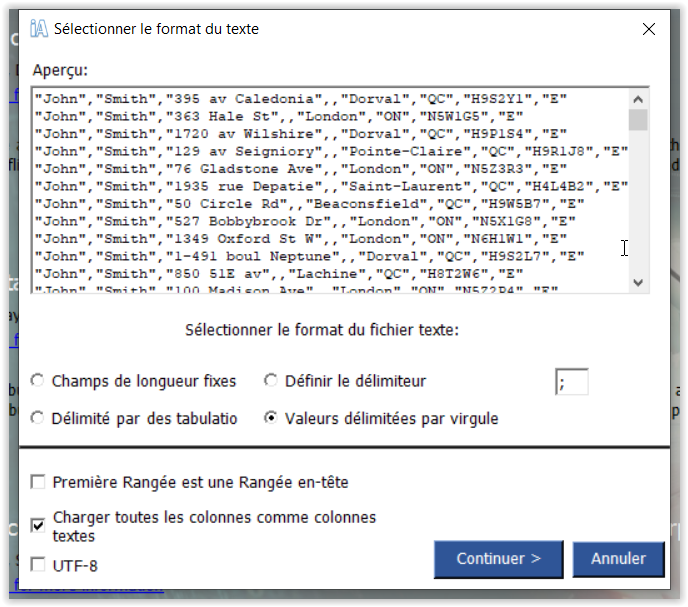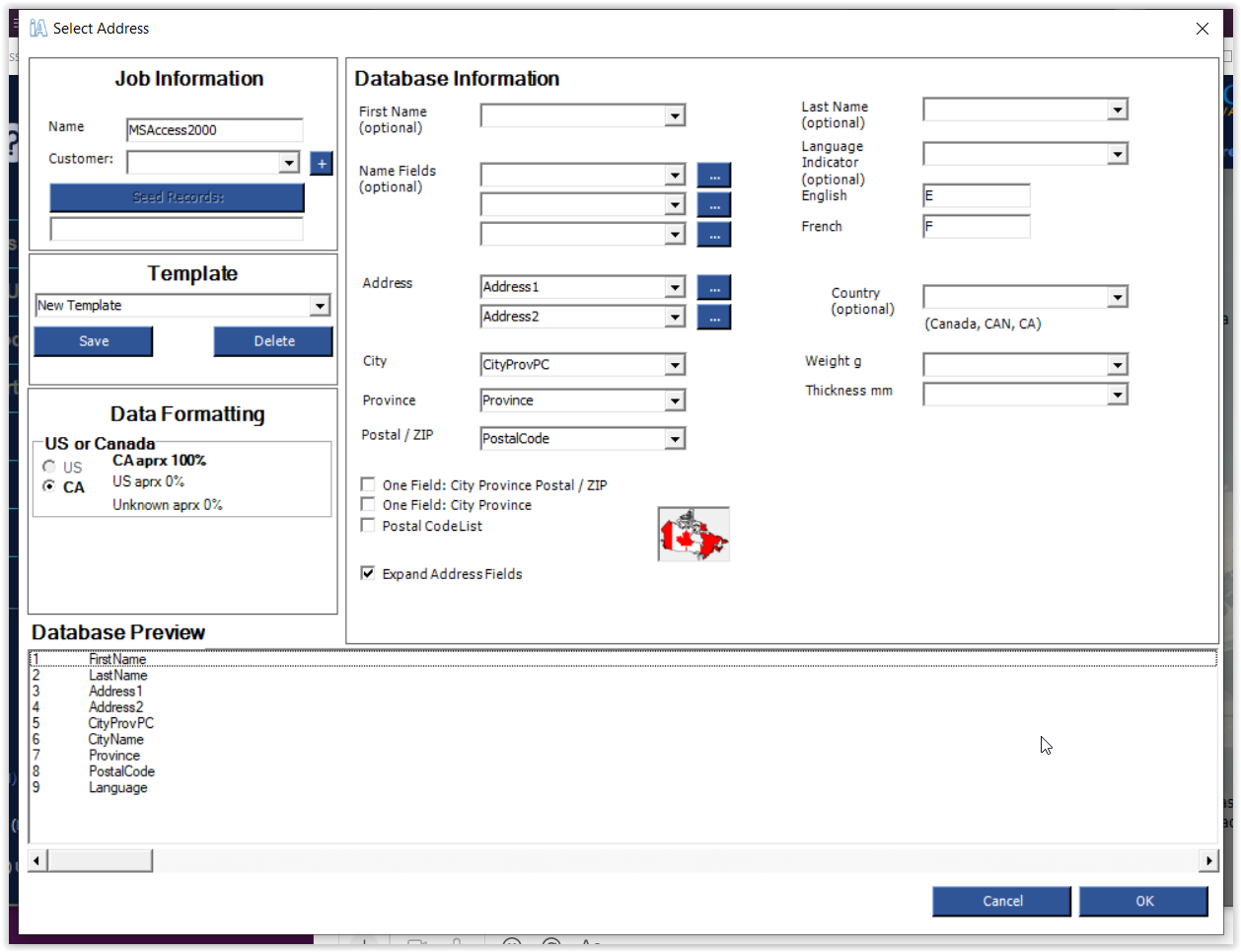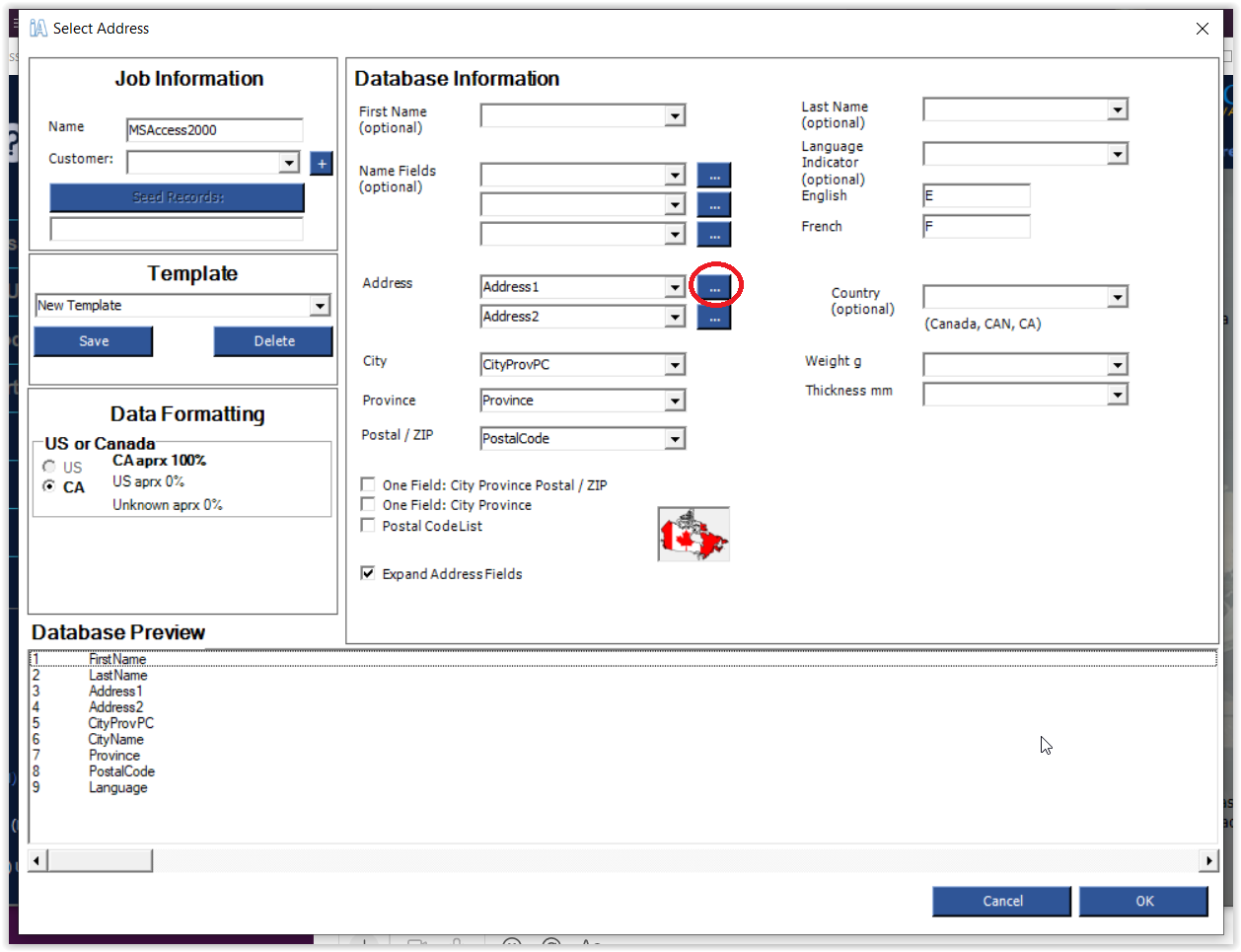Create a Job
To start a new job, select “Create Job” from the File menu.
Select the database and click “Open” or double click the database. Once your database has opened, a screen will appear to continue with the next steps.
Multiple Tables in a Database
If multiple tables exist in the database, a window will appear listing the tables and the number of records in each table. Select the table you want to use, then double click or click “Done”.
If you need to import multiple tables from the same spreadsheet, you will have to repeat this process using the Merge into Job feature for each table.
Text Files
If you have selected a text database, the following window will appear:
Choose the type of text file, select whether your first row is a header row and if you would like to load all columns as text columns (recommended) and click continue. If you have chosen a fixed length file, a screen will appear showing you which fields iAddress™ has autodetected. You can make changes to your file, and load or save templates. When you are satisfied with your changes, click “Create Job”.
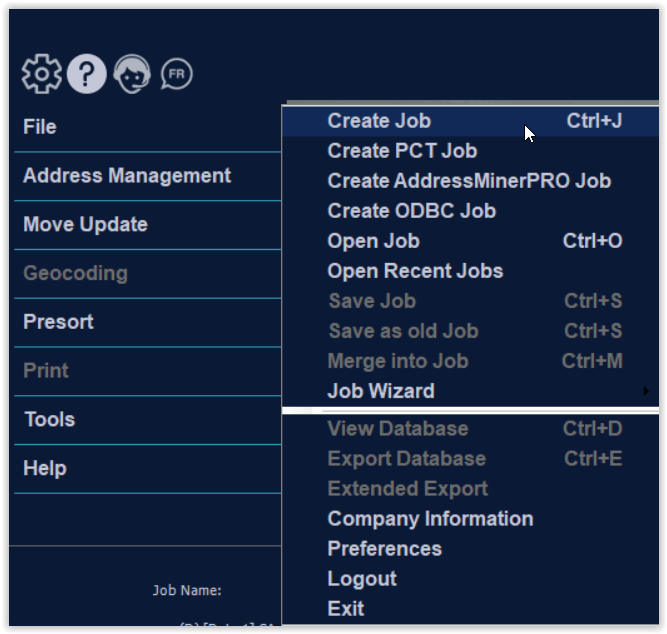
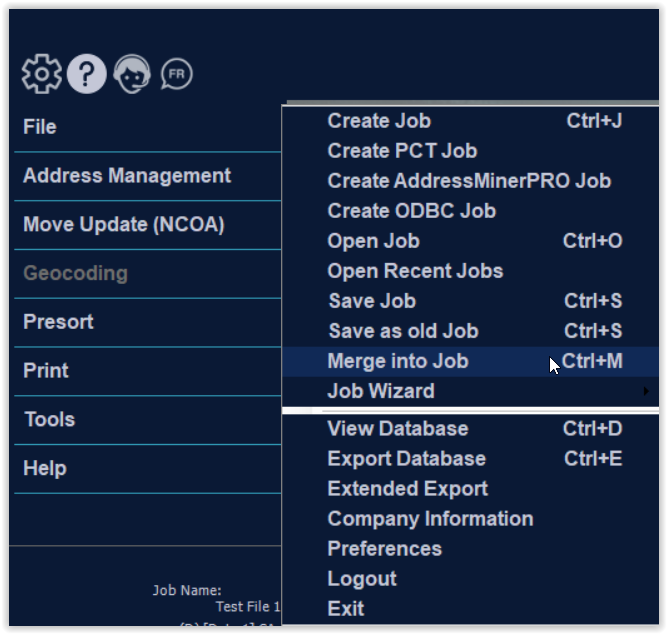
Selecting Address Fields
iAddress™ will automatically attempt to match the database fields to the appropriate iAddress™ fields. You can override these entries and select fields iAddress™ was unable to locate. From the drop down list under each iAddress™ field, scroll and select the database field that corresponds to the information required by the program.
- Click the down arrow below the Last Name field to bring up the drop down list
- Select the field that contains the Last Name information
- You can assign a name to your job. If you do not assign a name, a default description for your job will be used.
- Ensure you have filled in all required fields and any of the optional fields, then click “OK”.
Single Field Data
Canada:
- City, Province and Postal CodeOM, you must check the “One Field: City Province Postal / ZIP” box
- City and Province, you must check the “One Field: CityProvince” box
US
- City, State, and Zip CodeTM, you must check the “One Field: City State Zip(Zip+4)” box
- City and State, you must check the “One Field: City State” box
You will then be prompted for the field name containing this information
Multiple Field Components
- If your address is split into many field components (eg. apartment, street number, street name, etc.), click the button to the right of the first address line. Select all address line components in the order you want them to appear and click Done.
Language Indicator (Canada)
- If your database has a field that indicates whether the entry is French or English and you wish to use this information in your correction, select the appropriate field from the drop-down menu. Beside each language, enter the appropriate code.
To view your data
- If you are unsure of the data contained in the fields, use the horizontal scroll bar below the database box to scroll left and right. This scroll bar will also allow you to see what will appear in the iAddress™ fields. Fill in any field, then scroll left and right.
Using Templates
- If you frequently create jobs using the same data file, you can create a template. This template stores the field information so you do not have to select your fields when creating a new job.
Character Set
- This option tells iAddress™ what type of system the data originated from so that it can “translate” various computer codes. The default is Windows; some users require OEM if their data did not originate from a Windows-based system.
Using Customer Information
- If you have entered information on your customers under Company Information, you can use the drop-down here to select them. This will display their name and their associated USPS or Canada Post account number on reports.
Remove Header Row
- If you are using an Excel File and the first row contains the column headers, select this option to use the first row as column headers.
